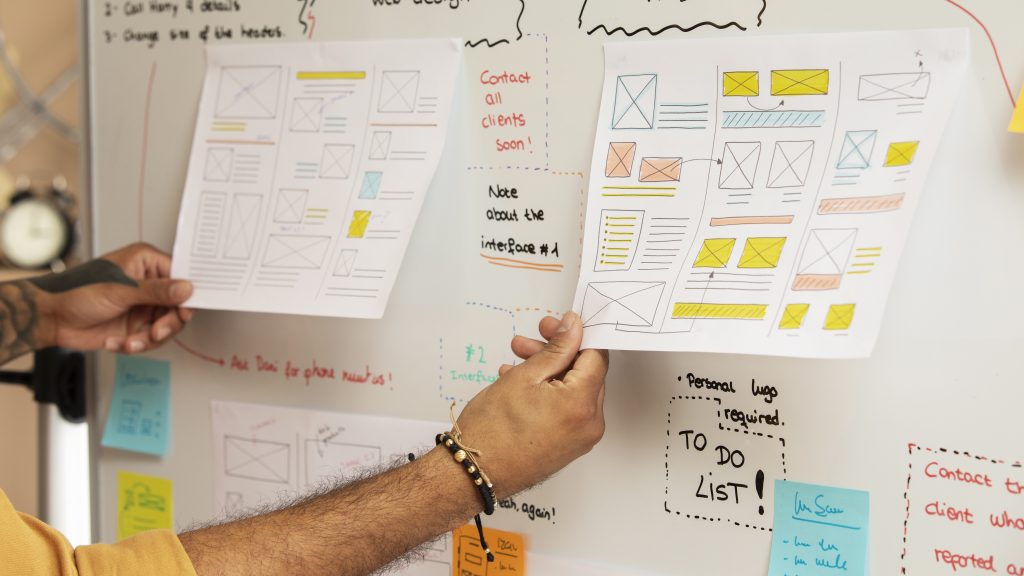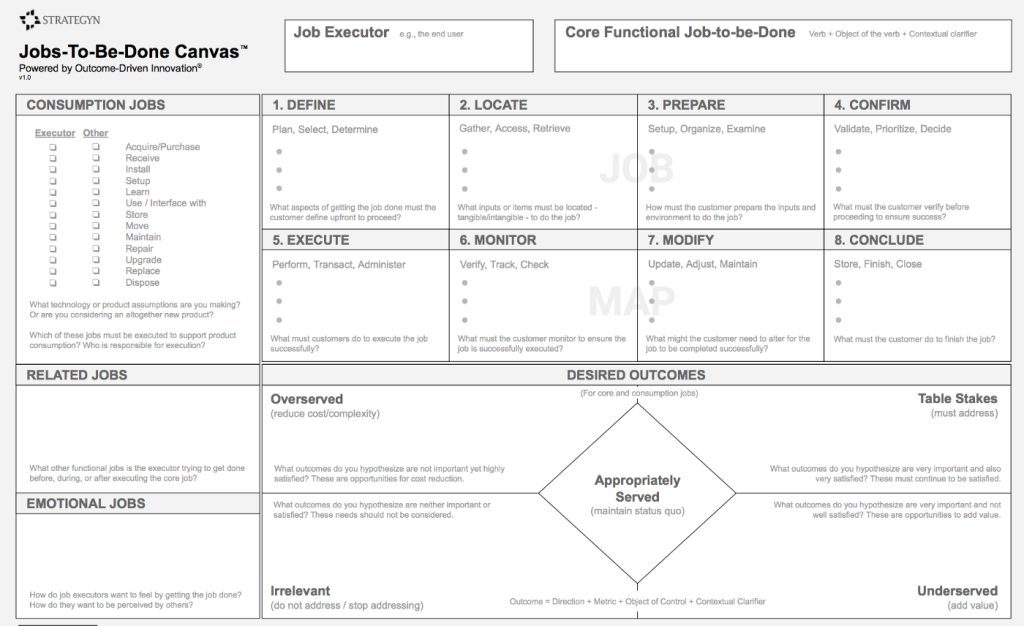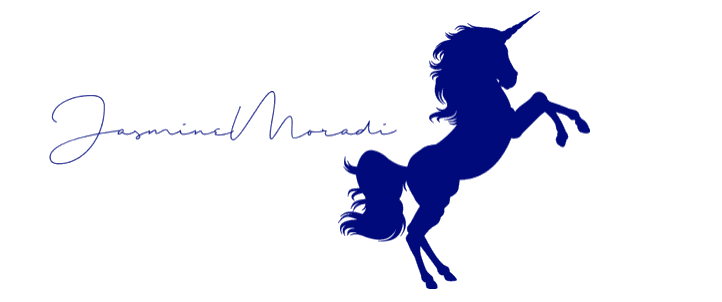
Jobs-to-be-Done framework and interview questions
Why keep guessing, when you can know the facts?
“Why are we wasting time guessing when we can go out in the field conducting a 360-view mapping of the customer’s behaviour?
I have met many companies and startups that spend hours beginning the process by brainstorming and guessing the needs of their existing or potential customers. I always get frustrated in those meetings “Why are we wasting time guessing when we can go out in the field conducting a 360-view mapping of the customer’s behavior? We should all be out in the field collecting clues by asking, observing, and testing hypotheses. It is time to stop wasting time guessing and designing and instead invest money in hiring Behavioural Scientists and UX Researchers to map the actual needs and behavior of the job that the customers want to get done. Why keep guessing, when you can know the facts?
What methods and interviewing questions do we need to reach the customer’s Jobs-to-be-Done requirements?
Firstly, we should go away from the traditional way of conducting interviews by focusing on the buying process, the day of purchase, customer behavior, or the product. Instead, we should put on our Jobs-to-be-Done glasses and solely focus on understanding the core functional job the customer is trying to get done.
Step 1: Define the Market where the Jobs-to-be-Done.
Step 2: Map the job by observing the group of people in the chosen market and define the job they are trying to get done.
Step 3: Uncover the customer’s needs.
Step 4: Uncover the metrics that customers use to measure success (or dare I say “progress”) when trying to get a job done and measure the outcome of their decision. For example performance metrics (desired outcomes vs actual outcomes).
Which customers should we start interviewing?
⇒ The End Users (Jobs-to-be-Done.) are the people who are looking for a product or service to get the core functional job done predictably, and efficiently. Implement and measure the performance metrics (desired outcomes vs actual outcomes) with the end goal of innovating a product that gets the job done better than the competitors.
⇒ People on the Product Lifecycle Support Team (The customer experience Journey) do the consumption chain jobs such as installing, setting up, storing, transporting, maintaining, repairing, cleaning, upgrading, and disposing of products. By observing these costumes you can find ways to improve the overall customer experience.
⇒ Purchase Decision Makers (The Buying Process) are the customers that are in charge of searching for and evaluating different market offerings, and then deciding which one to buy. Interview these customers when trying to understand how to improve the buying process, and also to understand the financial metrics used to make the buying decision smoother and efficient.

Which job is the job executor trying to perform?
Start with using the customer“Job-to-be-Done” framework which will help you to define the core functional job.
Ask questions such as:
– “When using that product, what are you ultimately trying to get done or accomplish?”
– “ Are you using multiple products?”
– “What are you trying to accomplish as you cobble together multiple products and services?”
– “ What is the final output you’re seeking?”
The key is to listen for action verbs, the object of the action, and the contextual clarifier. Also, make sure that you are always defining the core functional job from the customer’s perspective, not the company’s perspective.
– Define the job, not the situation.
– Don’t include emotional jobs and other needs in the statement. A functional job does not have social and emotional dimensions.

Market = a group of people + the core functional job they are trying to get done.
How do we define the market?
1. Market = a group of people + the core functional job they are trying to get done. For example, music enthusiasts who are trying to listen to music constitute a market. Customers are loyal to the job to be done, not to the solutions they use, which means they will always look into listening to music no matter the medium they use, LP, cassette, CD, app, etc.
2. Map the market as a process by understanding the characteristics of a job by creating a job map.
– It identifies where the job begins and where the job ends, revealing gaps in current solutions.
– It identifies the optimal logical flow for processes enabling it. Many processes become inefficient and iterative when an input needed early in the process is not available until later in the process. This optimal flow can often be revealing all by itself.
– It defines the competitive landscape. Understanding the complete job often reveals non-traditional competitors. It establishes a long-term roadmap for product/portfolio development. It paves the way to getting the entire job done on a single platform (or offering).
– It guides the capture of desired outcome statements associated with the core functional job. This is why it is created before we capture them.
What questions should we ask?
– “What is the first thing you do as you begin performing the job?“
– “What are you trying to accomplish when you do that?”
– “What do you need to plan for, or what decisions do you need to make before you begin the job?” – [LOCATE] “What steps do you take to locate and gather the needed inputs?”
– [PREPARE] “What steps do you take to prepare or organize those inputs?”
– [CONFIRM] “What steps do you take to confirm you are ready to execute the job?”
– [EXECUTE] “What steps do you take to execute the core functional job?”
– [MONITOR] “What steps do you take to monitor or verify the execution step is executed effectively?” “What do you track as you perform the job?”
– [MODIFY] “What steps do you take to make modifications to the execution when something goes wrong?”
– [CONCLUDE] “What steps do you take to properly complete the job, or prepare for the next job cycle?”
How do we uncover the metrics that customers use to measure success?
You need to gain a deep understanding of the customer’s job-to-be-done to define needs are called customer desired outcomes. They are not expressions of pain, delight, gains, or struggles since that would only represent one individual — and a single state of need. They are designed to be mutually exclusive and collectively exhaustive to describe the perfect execution of the job.
Direction
Job executors are always trying to eliminate time, avoid problems, and eliminate inefficiencies.
Metrics
– Minimize the time it takes to (do something).
– Minimize the likelihood that (something causes an undesirable result).
– Minimize the likelihood of (something undesirable happening).
Object of control
– Object of control + [when].
– Object of control + [for what purpose].
– Object of control + [to what end].
What questions should we ask?
– What makes [job step] time-consuming? — this will lead to outcomes that begin with “minimize the time it takes to.”
– What are you trying to achieve when [job step]?
– What are you trying to avoid when [job step]? — this will result in outcomes that begin with “minimize the likelihood.”
– What makes [job step] unpredictable? — or you can use words like inefficient, challenging, wasteful, or inconvenient.
– When trying to [job step] what makes [solution A] more attractive than [solution B]? — your goal here is not to have a discussion about solutions but to uncover desired outcomes based on an advantage or disadvantage perceived by the respondent. Guide them through the map asking “What do you do next, and what are you trying to achieve, or avoid?”
Source: jobs-to-be-done.com

